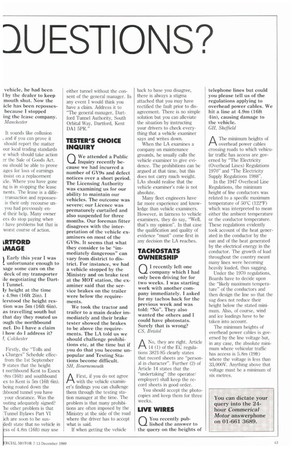LIVE WIRES
Page 45

If you've noticed an error in this article please click here to report it so we can fix it.
QYou recently published the answer to the query on the heights of telephone lines but could you please tell us of the regulations applying to overhead power cables. We hit a line at 4.9m (16ft 4in), causing damage to the vehicle.
GH, Sheffield
AThe minimum heights of overhead power cables crossing roads to which vehicular traffic has access are governed by "The Electricity (Overhead Lines) Regulations 1970" and "The Electricity Supply Regulations 1988".
In the 1947 Overhead Line Regulations, the minimum height of line conductors was related to a specific maximum temperature of 50°C (122°F) which was interpreted to mean either the ambient temperature or the conductor temperature. These regulations evidently took account of the heat generated in the conductor by the sun and of the heat generated by the electrical energy in the conductor. The growth of load throughout the country meant many lines were becoming heavily loaded, thus sagging.
Under the 1970 regulations, Boards have to decide upon the "likely maximum temperature" of the conductors and then design the line so that the sag does not reduce their height below the stated minimum. Also, of course, wind and ice loadings have to be taken into account.
The minimum heights of overhead power cables is governed by the line voltage but, in any case, the absolute minimum where vehicular traffic has access is 5.8m (19ft) where the voltage is less than 33,000V. Anything above that voltage must be a minimum of six metres.




















































































































































